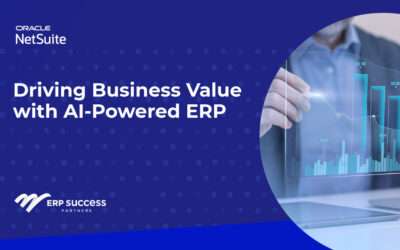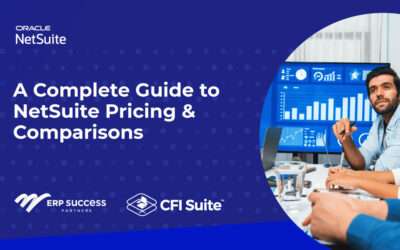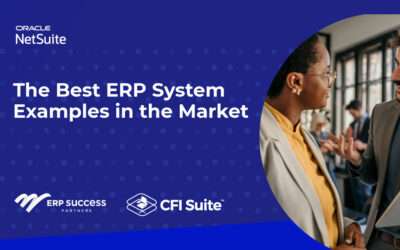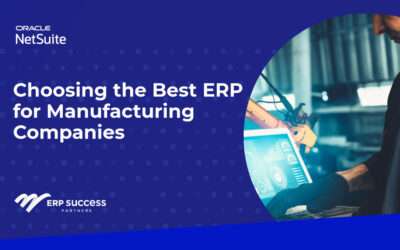A primer on some of the key differences between cloud-based and on-premise Enterprise Resource Planning systems.
With public cloud service spending expected to grow 18.4% in 2021 to $304.9 billion (up from $257.5 billion last year) and the cloud projected to make up 14.2% of the total global enterprise IT spending market in 2024 (up from 9.1% in 2020), the push to move business applications into the cloud is on in full force.
The enterprise resource planning (ERP) sector has held a prominent position in this race to the cloud. And while vendors may have lit the fire, users then stoked it by quickly latching onto the idea of being able to run their entire operations in the cloud. More affordable, easier to implement, and requiring fewer internal IT resources than their on-premises counterparts, cloud-based ERP platforms have since become the de facto choice for companies of all sizes.

On-premise ERP solutions are installed locally on a company’s hardware and servers and then managed by its IT staff. Cloud or Software-as-a-Service (SaaS) ERP is offered up as a service, with the company’s ERP and its associated data being managed centrally in the cloud by the vendor (and then accessed by customers using a browser).
According to NetSuite, there are several clear arguments in favor of a cloud-based ERP implementation, with the top one being lower ownership costs. “On-premises ERP systems usually require large upfront and ongoing investments to purchase and manage the software and the related hardware, servers, and facilities necessary to run it,” it says. “If your company doesn’t have a large or experienced IT staff, you may also have to invest more time and money in additional personnel and train them.”
With an on-premises ERP, IT teams may also have to spend a significant amount of their time and budgets ensuring that the system stays online. Then, when it’s time to upgrade the ERP, those IT teams must “redeploy the system across the various users’ computers and re-implement various customizations and integrations that your business installed on your previous software,” NetSuite points out.

Today, nearly every ERP vendor offers some form of cloud deployment option, with most of those applications billed via a monthly or annual subscription (with additional recurring fees for support, training, and updates). On-premises software, on the other hand, is priced under a one-time perpetual license fee (with recurring fees for support, training, and updates).
With cloud ERP, the vendor hosts and maintains all of the IT infrastructure, keeps the system up and running, secures the data, and rolls out product enhancements in the background. “Cloud ERP solutions like NetSuite are continually upgraded by the provider so you can be sure you’re always using the latest, most advanced version of your ERP software,” NetSuite adds.
There are also some clear financial arguments in favor of cloud ERP. Where on-premises systems are generally considered a capital expenditure (one large investment upfront), Software Advice explains, cloud ERP is typically considered an operating expenditure (i.e., an additional overhead cost the organization will continue to pay). This puts cloud ERP within reach of small to midsized (SMB) companies that wouldn’t otherwise be able to invest in an on-premises ERP deployment.
Best suited for larger enterprises that have big budgets and ample internal IT resources, on-premises ERPs do offer more customization and control options. However, the expense and ongoing maintenance associated with these systems—which don’t generally support mobile work—can quickly offset any advantages they may offer.
“In the case of [an] on-premises ERP system, it offers a great level of customization, but the process of customizing the on-premises ERP can delay the implementation process,” Data Driven Investor points out. “As the ERP vendor rolls out new software updates and enhancements frequently, your existing system may go passive. The on-premises ERP is not readily available for real-time data monitoring by your employees and stakeholders.”
ERP is the Connective Tissue

According to TechTarget, today’s ERP systems have become much more than resource planning tools; they are the connective tissue that links pretty much every core business function. And where on-premises ERPs can take more than a year to fully deploy and years to get right, SaaS ERP systems are often ready to go live in three to six months. “SaaS applications also tend to be easier for employees to learn to use than on-premises applications, easing the change management and adoption processes,” it adds.
And while on-premises systems are sometimes more customizable than their SaaS counterparts, these customizations can be both complex and expensive. “SaaS ERP products tend to be more cookie-cutter at their core, but they are also relatively easy to manipulate and configure,” TechTarget notes. “Plus, because of their constant connectivity, SaaS ERP systems update changes everywhere automatically, while on-premises systems are much more likely to run into issues with data consistency.”






